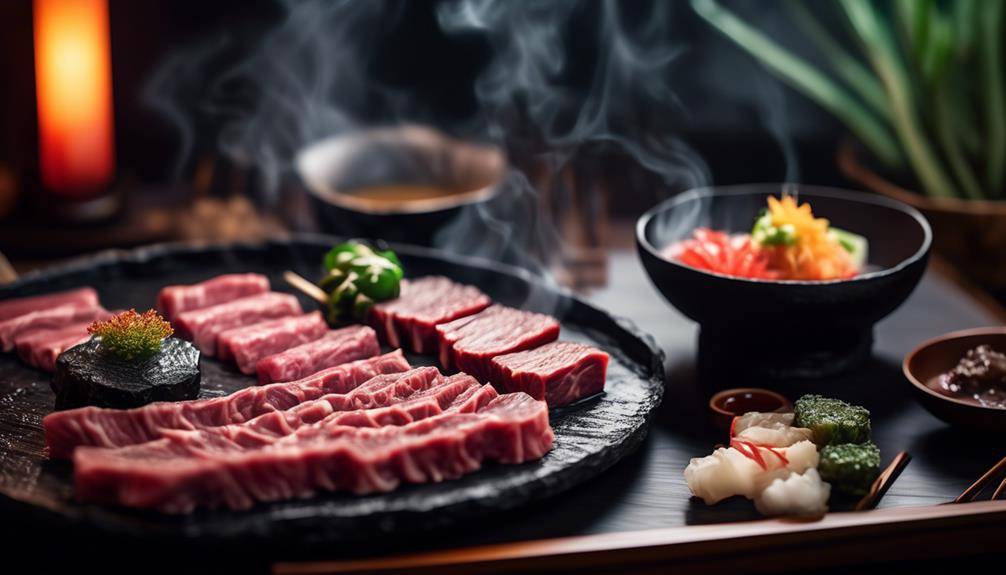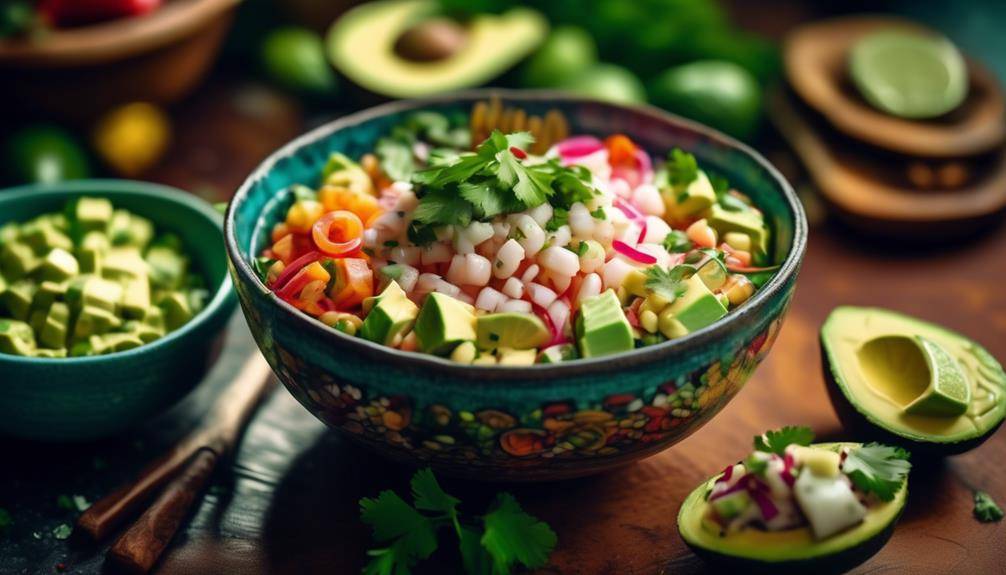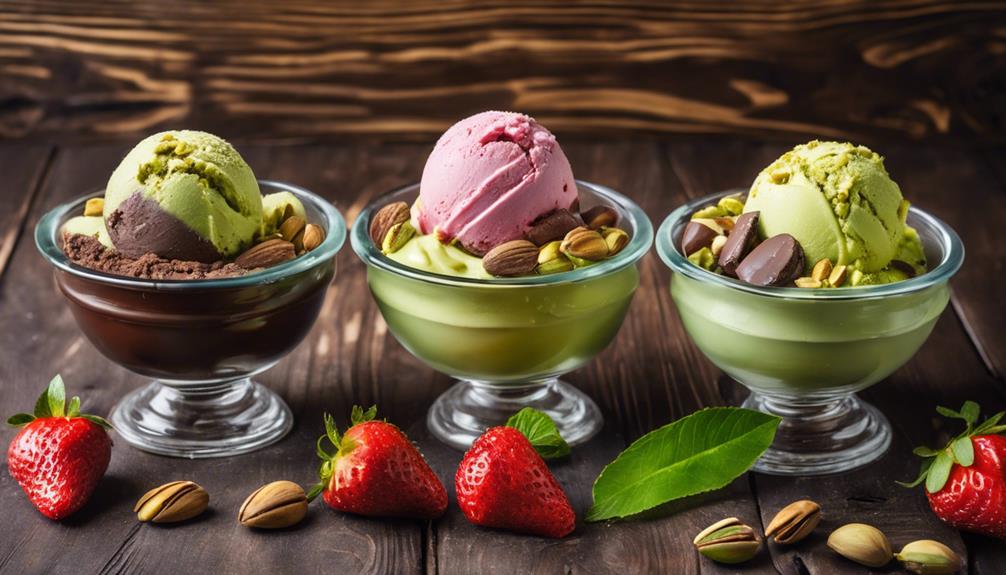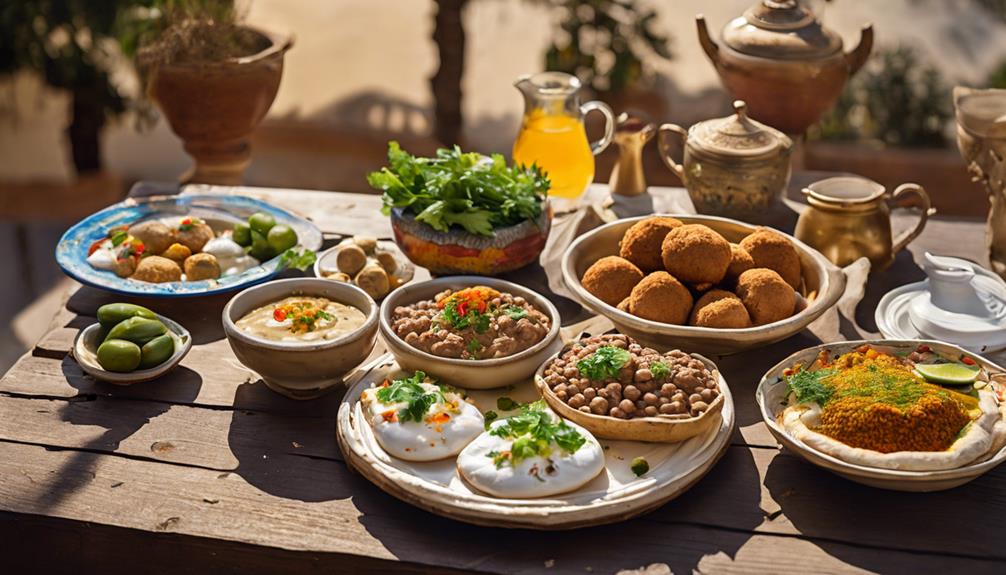Exploring Amazing Traditional Thai Curry Taste Profiles
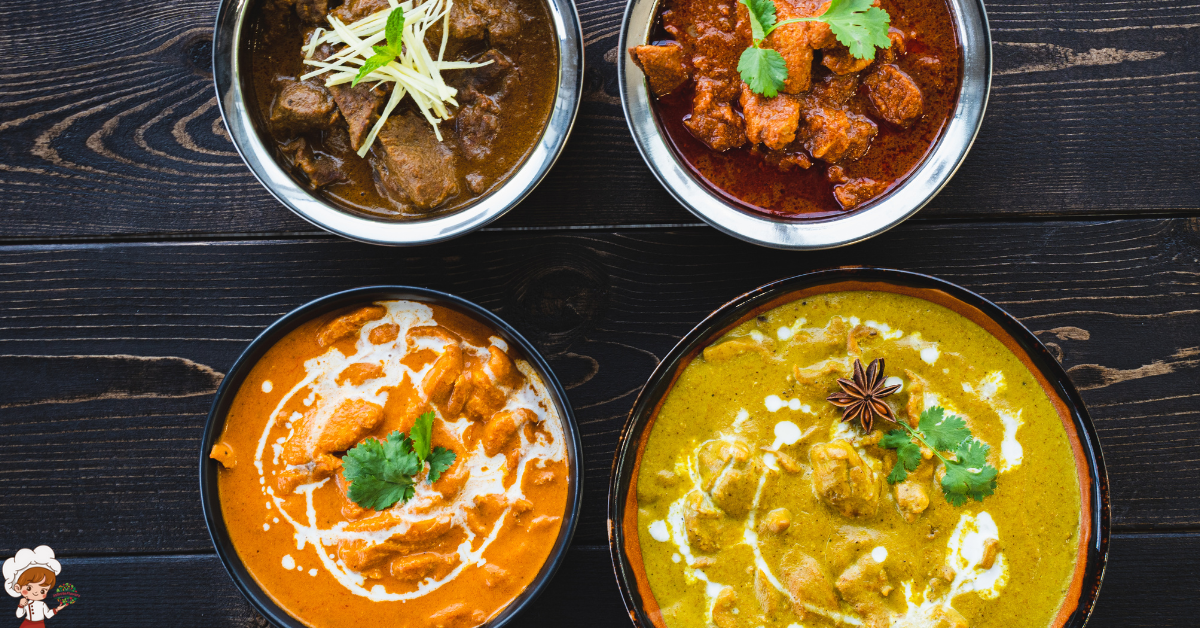
When you explore Traditional Thai Curry Taste Profiles you’re in for an exciting flavor adventure. Each curry showcases a unique combination of spices, herbs, and regional influences. Green curry brings fresh chilies and fragrant basil, while red curry offers a robust, rich taste with subtle sweetness. Yellow curry features turmeric’s warmth, creating a creamy, mild dish. Massaman curry introduces warm spices like cardamom, merging diverse culinary traditions. With each regional variation, you’ll discover different ingredients and cooking techniques that balance sweet, salty, and spicy flavors. Pay attention to these profiles, and you’ll reveal a deeper appreciation for each dish.
Overview of Thai Curry
When you think of Thai curry, you might picture a vibrant dish bursting with flavor and aroma. Thai curry isn’t just a meal; it’s a culinary experience shaped by the country’s rich history and diverse culture. The roots of Thai curry trace back centuries, influenced by trade routes that introduced various spices and cooking techniques. As you explore the essence of Thai curry, you’ll discover how historical influences have woven together to create distinct regional variations, each reflecting local ingredients and traditions.
The cultural significance of curry in Thailand goes beyond taste. It’s a symbol of communal dining and celebration. Families gather around the table, sharing bowls of curry alongside rice, fostering connections and cherished memories. Thai curry represents a balance of flavors—sweet, sour, salty, and spicy—mirroring the harmony sought in Thai society.
You’ll notice that different regions in Thailand showcase unique curry styles, influenced by geography and climate. For instance, the creamy coconut curries of the south contrast with the more herbaceous and spicy varieties found in the north. These differences tell stories of the land and the people, underscoring the importance of curry in Thai culture.
In essence, Thai curry is more than just a dish; it’s a reflection of Thailand’s rich tapestry of history and culture. Each bite connects you to the past, revealing the heart and soul of a nation that treasures its culinary heritage.
Key Ingredients in Curries
Thai curry’s rich flavors stem from a handful of key ingredients that define its character. At the heart of every curry are the curry spices, which create a unique taste profile. Common spices like turmeric, cumin, coriander, and chili contribute to the vibrant color and aromatic nature of the dish. Each spice plays a role, balancing heat, sweetness, and earthiness to achieve that signature Thai flavor.
You might also notice the importance of fresh herbs, such as lemongrass, kaffir lime leaves, and galangal. These ingredients add layers of complexity, enhancing the overall experience of the curry. Ingredient origins matter, too; many of these herbs and spices are indigenous to Southeast Asia, giving Thai curries their distinct regional flair.
Another essential component is the protein or vegetables you choose. Whether you opt for chicken, beef, shrimp, or tofu, the choice can alter the dish’s profile greatly. The ingredients you select not only affect taste but also texture, making each curry a personal expression of your culinary style.
Green Curry Taste Profile
Green curry delivers a vibrant and complex taste profile that stands out among Thai curries. Its bold flavors come from a unique blend of green curry ingredients, which typically include fresh green chilies, garlic, shallots, lemongrass, and Thai basil. These ingredients create a fresh yet spicy base that’s aromatic and enticing, making every bite a delightful experience.
You might notice that the heat level in green curry is more pronounced than in other Thai curries, thanks to the variety of green chilies used. This spiciness is balanced by the creamy richness of coconut milk, which helps to mellow the heat while enhancing the overall flavor. As you savor the dish, the fragrant herbs like kaffir lime leaves and Thai basil add layers of freshness and complexity, taking your palate on a flavorful journey.
Exploring the green curry origins, you’ll find that it hails from Central Thailand, where the combination of ingredients reflects the region’s culinary traditions. The use of fresh, local produce contributes to its distinctive taste, which can vary slightly based on the chef’s personal touch or the specific locality.
When you enjoy green curry, you’re not just tasting a dish; you’re experiencing a harmonious blend of heat, sweetness, and aromatic freshness that captures the essence of Thai cuisine. This balance of flavors makes green curry a favorite among curry enthusiasts, offering a unique perspective on traditional Thai cooking.
Red Curry Taste Profile
Shifting from the vibrant flavors of green curry, red curry presents a rich and robust taste profile that’s equally enthralling. When you immerse yourself in red curry, you’ll notice a complex balance of flavor that makes it a favorite among many Thai curry lovers. The base typically includes red chili peppers, which lend their signature color and a moderate to high spice level, depending on the variety of chilis used.
As you savor each spoonful, you might pick up on the subtle sweetness that comes from coconut milk, harmonizing beautifully with the heat. This creaminess helps to tone down the spice levels, allowing you to enjoy the full spectrum of flavors without overwhelming your palate. The ingredient variations in red curry can also play a significant role in its taste. Common additions like bamboo shoots, bell peppers, and basil not only enhance the visual appeal but also contribute distinct textures and layers of flavor.
You might find that some recipes incorporate proteins like chicken, beef, or tofu, each adding its own characteristics to the dish. The freshness of herbs like Thai basil or cilantro can elevate your experience, providing a fragrant finish that lingers. As you explore red curry, you’ll discover that its depth and versatility make it a delightful choice, whether you’re enjoying a homemade version or savoring it at your favorite Thai restaurant. The interplay of spice and sweetness guarantees each bowl is a warming experience.
Yellow Curry Taste Profile
Yellow curry offers a delightful taste profile that’s both comforting and aromatic. This curry, known as “Gaeng Lueang” in Thai, typically combines a rich blend of spices, including turmeric, which gives it that distinctive yellow hue. The history of yellow curry is fascinating; it’s believed to have been influenced by Indian cuisine, particularly the use of turmeric and cumin, making it a unique fusion of flavors.
When you taste yellow curry, you’ll immediately notice its mild heat. Unlike red or green curries, the spice level is usually more subdued, allowing the other flavors to shine. The sweetness from coconut milk balances the spices perfectly, creating a harmonious blend that’s both creamy and fragrant. You might find that the inclusion of ingredients like potatoes and carrots adds a heartiness to the dish, making it feel even more comforting.
There are several yellow curry variations that you can explore. For instance, some regions might use chicken or beef, while others might include seafood or tofu, catering to different palates and dietary preferences. The balance of flavors can also change based on local ingredients and personal recipes, so don’t hesitate to try different versions. Whether you enjoy it with rice or as part of a larger meal, yellow curry is sure to leave a lasting impression, making it a staple in Thai cuisine that’s loved by many.
Massaman Curry Characteristics
Massaman curry brings a unique blend of flavors that sets it apart from other Thai curries like yellow curry. Originating from the Muslim community in Southern Thailand, its massaman history is rich and complex, merging influences from Indian and Persian cuisines. You’ll notice this curry’s distinct taste profile features warm spices such as cardamom, cinnamon, and cloves, often combined with the earthy notes of tamarind and peanuts.
When you take a bite, the creamy coconut milk envelops your palate, balancing the spices beautifully. Unlike other Thai curries, which can be more vibrant and herbaceous, massaman offers a comforting, slightly sweet flavor profile that feels almost like a warm hug. The primary protein used is typically beef or chicken, but you’ll also find massaman variations that incorporate lamb or even tofu for a vegetarian twist.
What really makes massaman curry special is its versatility. You can customize it according to your taste preferences or dietary needs, making it a delightful dish for everyone at the table. Whether you’re enjoying a traditional version or experimenting with new ingredients, the essence of massaman remains intact. It’s this adaptability, combined with its rich historical background, that makes massaman curry a beloved choice for many Thai food enthusiasts. So, if you haven’t tried it yet, you’re missing out on a truly unique culinary experience!
Regional Variations Explained
Across Thailand, various regions put their own spin on curry, each bringing unique flavors and ingredients to the table. In Central Thailand, you’ll find a focus on rich, creamy coconut milk and a balance of sweet and savory elements. Dishes like red curry highlight this region’s penchant for bright herbs and spices, showcasing its curry history that dates back centuries.
Travel north, and Northern Thailand offers a different experience. Here, curries are often less spicy and feature ingredients like tomatoes and herbs native to the area. Khao Soi, a popular dish, combines a coconut milk base with fried noodles, reflecting the flavor evolution rooted in Burmese influences.
Heading south, the spice levels ramp up considerably. Southern Thai curries, such as Massaman and yellow curry, are known for their intense flavors and heat. The use of fresh, local seafood also plays an essential role in ingredient sourcing, making these curries stand out with their vibrant profiles.
In Eastern Thailand, you’ll encounter a fusion of flavors that incorporates elements from both local and neighboring cultures. Curries here often include ingredients like fish sauce and tamarind, providing a tangy twist that’s quite different from other regions.
Each area’s unique approach to curry not only reflects local tastes but also showcases Thailand’s diverse culinary heritage. Whether you prefer the creamy richness of Central Thailand or the fiery intensity of the South, there’s a perfect curry waiting for you to explore.
Balancing Flavors in Curries
When it comes to Thai curries, achieving a balance of flavors is essential to creating a dish that tantalizes your taste buds. You want to master the art of spice balance, ensuring that no single flavor overpowers the others. In Thai cuisine, this means blending the right amounts of sweet, salty, sour, and bitter elements. Start by incorporating fresh ingredients like lemongrass, galangal, and kaffir lime leaves, which provide a fragrant base for your curry.
Next, consider your choice of protein and vegetables. Each ingredient brings its own unique flavor profile, contributing to overall flavor harmony. For instance, coconut milk adds creaminess and sweetness, while fish sauce introduces a salty umami kick. Aim for the right proportions—too much coconut milk can mask other flavors, while too much fish sauce can overwhelm the dish.
Don’t forget about heat; it’s an essential component in many curries. Adjust the level of spice according to your preference, but remember that the heat should complement the other flavors rather than dominate them. You can achieve this by adding fresh chilies or chili paste gradually. Taste as you go, and adjust the seasoning accordingly.
Pairing Suggestions for Curry
Exploring pairing suggestions for curry can elevate your dining experience and enhance the dish’s flavors. When you think about curry, contemplate how the right accompaniments can complement its rich, aromatic profile. A well-selected curry wine can make all the difference. Wines with a hint of sweetness, like Riesling or Gewürztraminer, balance the heat of spicy curries beautifully, while a light Pinot Grigio can enhance milder versions.
In terms of spice pairings, fresh herbs are essential. Cilantro, basil, and mint not only add freshness but also enhance the curry’s complexity. You might also want to contemplate side dishes that bring out the best in your curry. Jasmine rice is a classic choice, soaking up the flavorful sauce and providing a neutral base. For something different, try coconut rice; its creaminess pairs wonderfully with the spices.
Don’t overlook the importance of textures, either. Crispy spring rolls or crunchy papadam can provide a delightful contrast to the smoothness of the curry. If you’re serving a red curry, grilled veggies can create a harmonious match, while a green curry might shine alongside steamed broccoli or bok choy.
Lastly, remember to offer a cooling element, such as a cucumber salad or yogurt-based raita, to help balance the spice. By thoughtfully contemplating your curry pairings, you’ll create a memorable meal that showcases the vibrant flavors of Thai cuisine.
Frequently Asked Questions: Traditional Thai Curry Taste Profiles
What Are the Health Benefits of Traditional Thai Curries?
Traditional Thai curries offer various health benefits. You’ll appreciate their nutritional components, like vegetables and lean proteins. Plus, the spice benefits from ingredients like turmeric and chili can enhance metabolism and reduce inflammation. Enjoy the flavor and health!
Can I Make Thai Curries Vegan or Vegetarian?
Yes, you can definitely make Thai curries vegan or vegetarian! Use plant-based proteins like tofu or tempeh as vegan substitutes, and don’t forget to enhance the dish with traditional curry flavorings like lemongrass and coconut milk.
How Do I Store Leftover Thai Curry?
You can store leftover Thai curry in airtight containers, refrigerating for up to three days. For longer storage, use freezing techniques. This guarantees flavor preservation, so you can enjoy your curry later without losing taste.
What Types of Rice Pair Best With Thai Curry?
When pairing rice with Thai curry, consider Jasmine rice for its fragrance, sticky rice for its texture, brown rice for a healthier option, or coconut rice for a creamy, sweet contrast. Each enhances your dish delightfully!
Are There Any Gluten-Free Options for Thai Curries?
Yes, you can easily make gluten-free Thai curries. Use gluten-free ingredients like rice flour or cornstarch for curry thickening. Always check your sauces and pastes to verify they’re gluten-free, so you can enjoy worry-free!
Conclusion
In exploring traditional Thai curry taste profiles, you’ve discovered the rich diversity and complexity that each type offers. From the vibrant heat of green curry to the comforting sweetness of Massaman, each dish brings its own character to the table. Remember, balancing flavors is key to a great curry experience, and pairing it with the right sides can elevate your meal even further. So, immerse yourself in these delicious variations and enjoy the journey of flavors!



